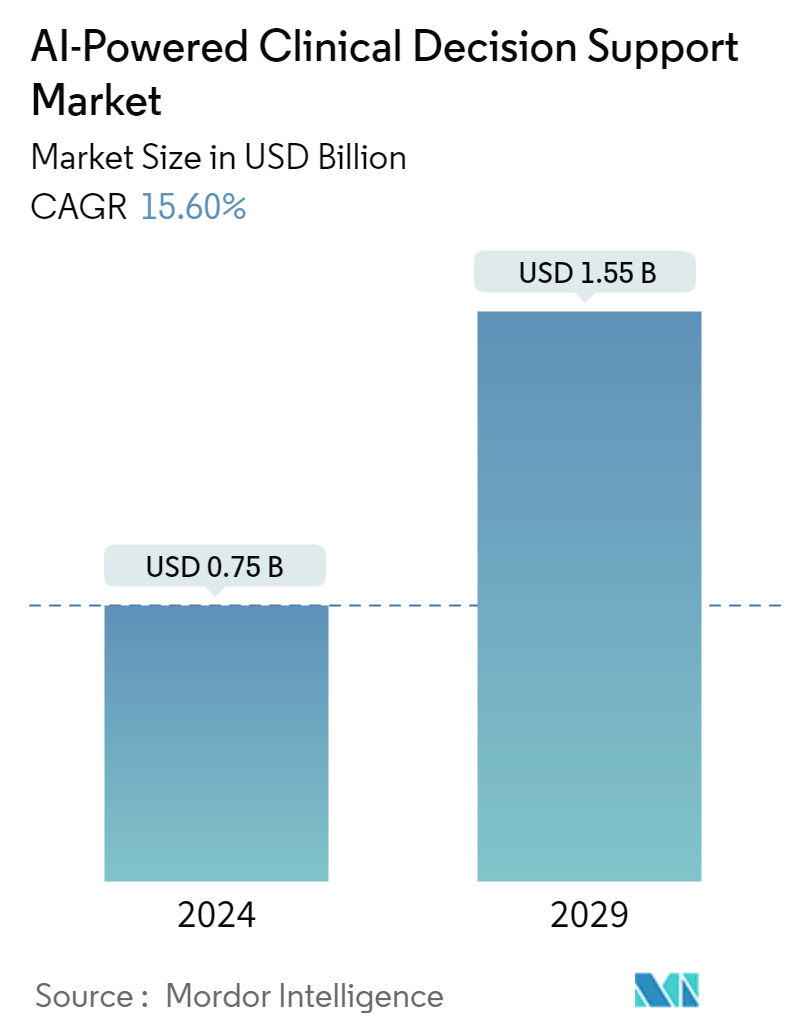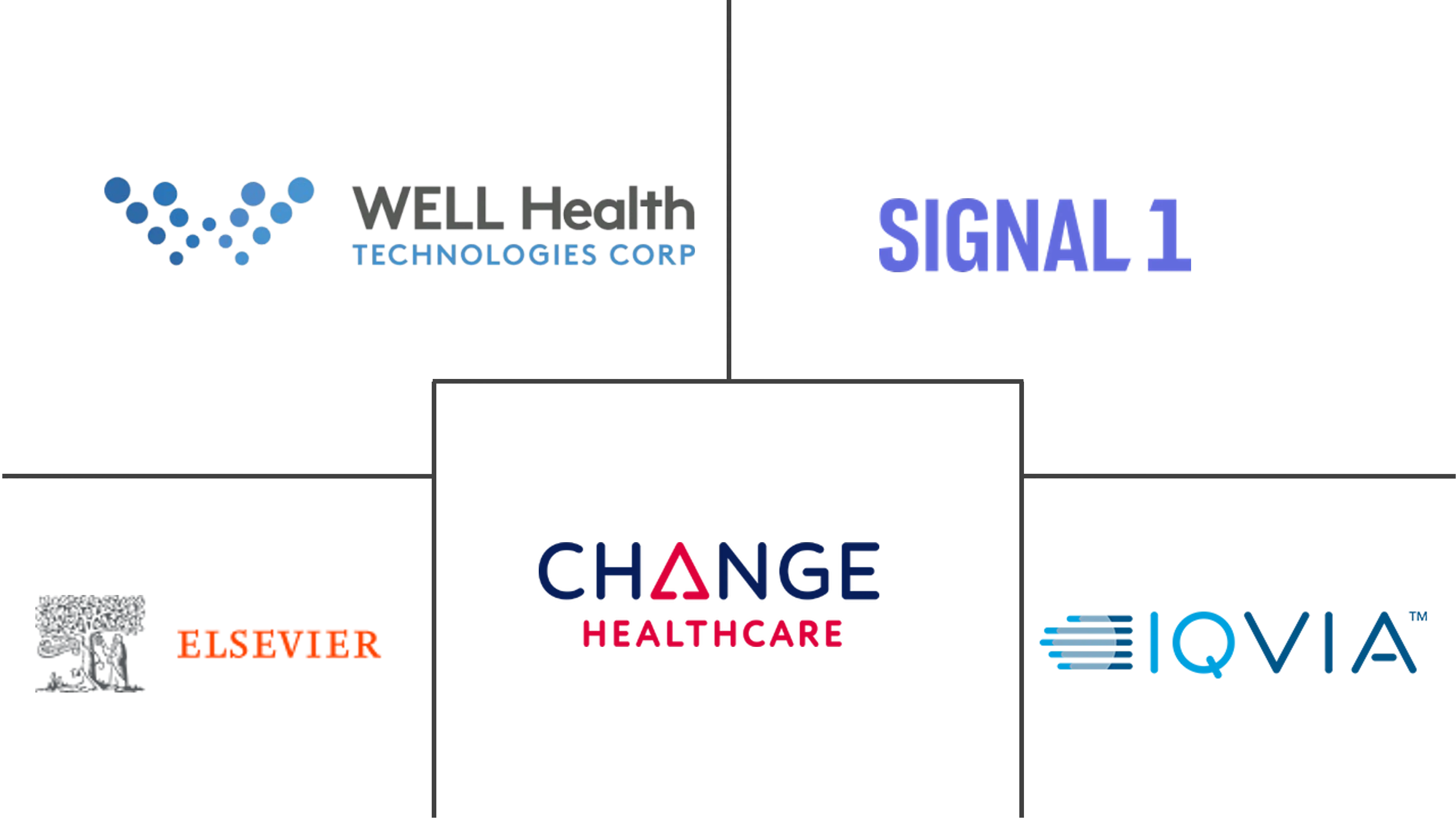Market Size of AI-Powered Clinical Decision Support Industry

| Study Period | 2019 - 2029 |
| Market Size (2024) | USD 0.75 Billion |
| Market Size (2029) | USD 1.55 Billion |
| CAGR (2024 - 2029) | 15.60 % |
| Fastest Growing Market | Asia Pacific |
| Largest Market | North America |
Major Players
*Disclaimer: Major Players sorted in no particular order |
AI-Powered Clinical Decision Support Market Analysis
The AI-Powered Clinical Decision Support Market size is estimated at USD 0.75 billion in 2024, and is expected to reach USD 1.55 billion by 2029, growing at a CAGR of 15.60% during the forecast period (2024-2029).
Factors such as the technological advancements in healthcare IT across facilities, the need to enhance the quality of care and minimize human errors, and the rising demand to reduce healthcare expenditure are expected to boost the market's growth during the forecast period.
Various studies have evaluated the potential of artificial intelligence in healthcare settings. For instance, a March 2024 article in the European Journal of Health, Psychology, and Education highlighted that Artificial Intelligence Clinical Decision Support Systems (AI-CDSSs) could significantly benefit primary healthcare (PHC) activities, aiding in diagnosis, patient management, and preventive measures. Furthermore, the integration of AI-CDSSs across healthcare facilities has successfully minimized prescription errors without inducing alert fatigue. With AI-enhanced CDSSs, electronic health records (EHRs) are now better equipped for clinical reasoning, managing larger volumes of information with a more holistic approach. Thus, the benefits offered by AI-powered CDS systems are expected to increase their adoption across healthcare facilities, boosting the market's growth.
Artificial intelligence-driven clinical decision support systems (CDSSs) enhance patient care by equipping healthcare professionals with precise and tailored insights for risk assessment, diagnosis, treatment optimization, and early monitoring of cardiovascular diseases (CVD). For instance, a February 2024 article in the Anatolian Journal of Cardiology highlighted research findings where AI and machine learning applications in monitoring heart failure patients led to reduced mortality rates through accurate prognosis predictions. Furthermore, AI-driven risk stratification using sinus rhythm electrocardiograms refines atrial fibrillation (AF) screening initiatives, significantly reducing the number of patients required for screening.
Technological advancements, particularly the integration of artificial intelligence into clinical decision support systems (CDSS), have spurred their adoption in hospitals, fueling the market's growth. For example, in January 2023, Grand River Hospital partnered with Signal 1 to explore an AI-driven CDSS. This system utilizes algorithms developed at St. Michael's Hospital. Such advancements enhance clinician decision-making and facilitate timely patient interventions by predicting changes in patient needs and conditions, further propelling the market's growth.
Furthermore, the rise of artificial intelligence technology has spurred the development of sophisticated clinical decision-support tools. This advancement has seen heightened adoption rates in hospitals and clinics, propelling the market's growth. For instance, in February 2023, Apollo Hospitals Group introduced its Clinical Intelligence Engine for physicians in India, integrated into the Apollo 24|7 platform. This is developed using artificial intelligence (AI) and machine learning (ML) techniques, and it enhances diagnostic accuracy, boosts physician productivity, and prioritizes patient satisfaction.
Therefore, owing to the rising adoption of AI-powered CDS systems across healthcare facilities, in the diagnosis of cardiovascular diseases among patients, and the growing development of AI-CDS systems, the studied market is expected to grow during the forecast period. However, data privacy, ethical considerations, and a lack of skilled professionals are likely to impede the market's growth during the forecast period.

